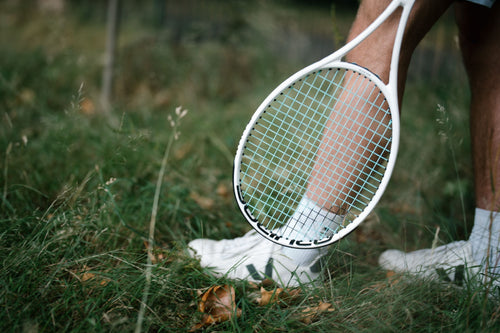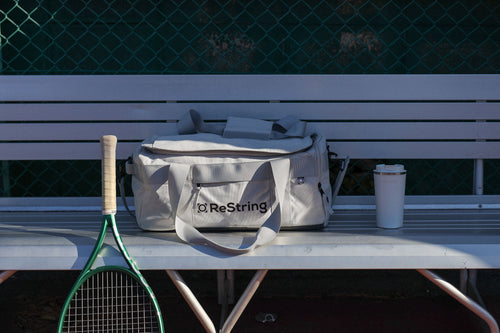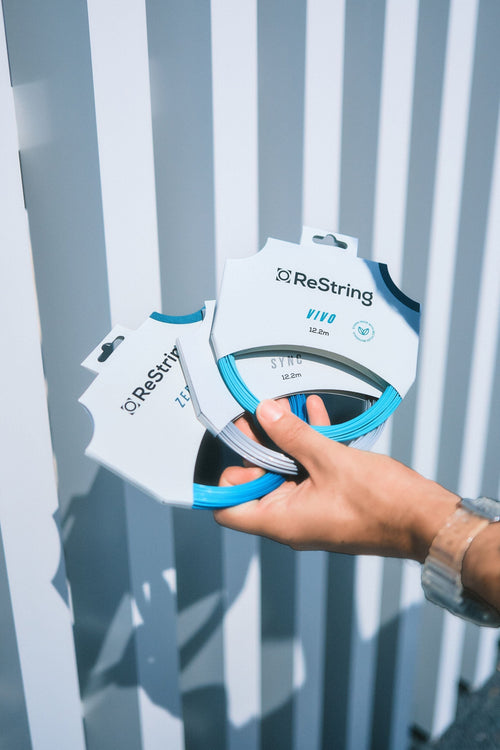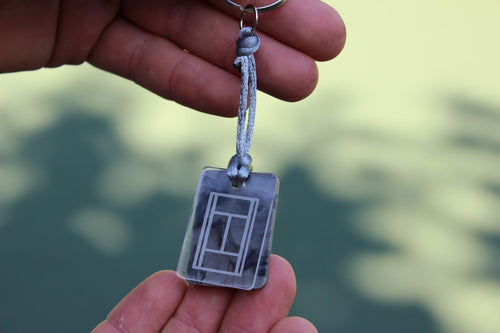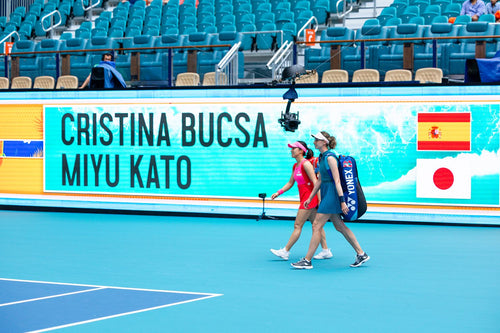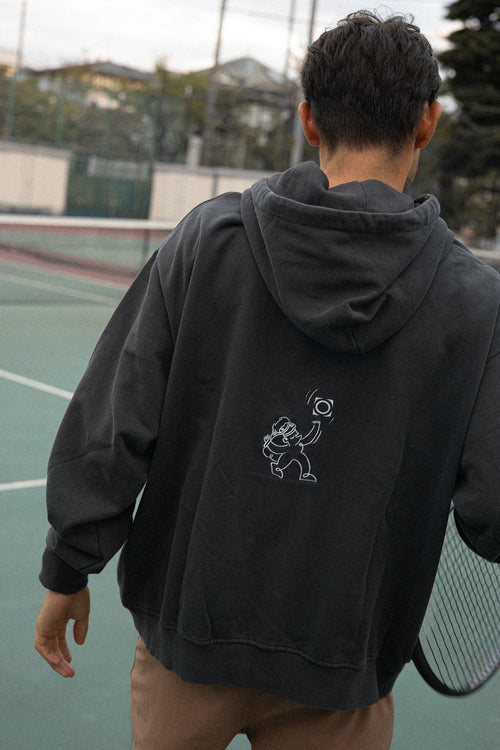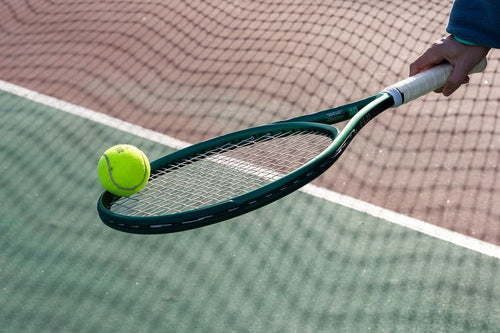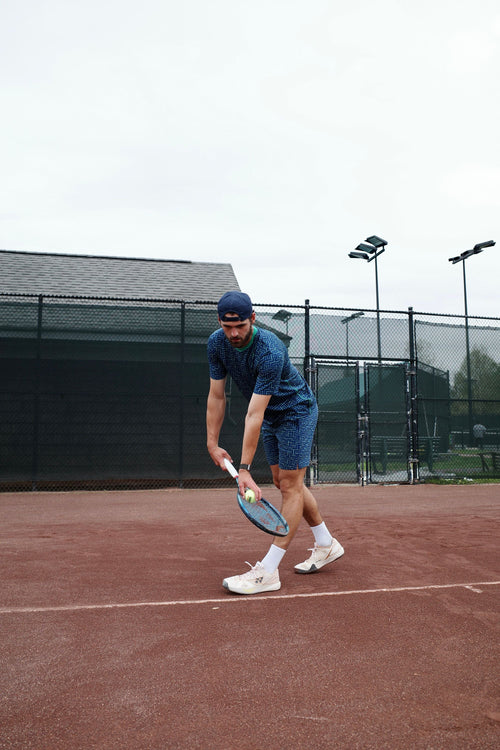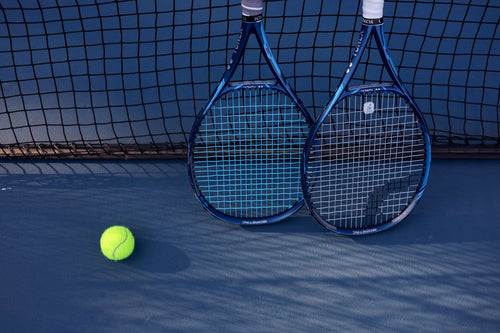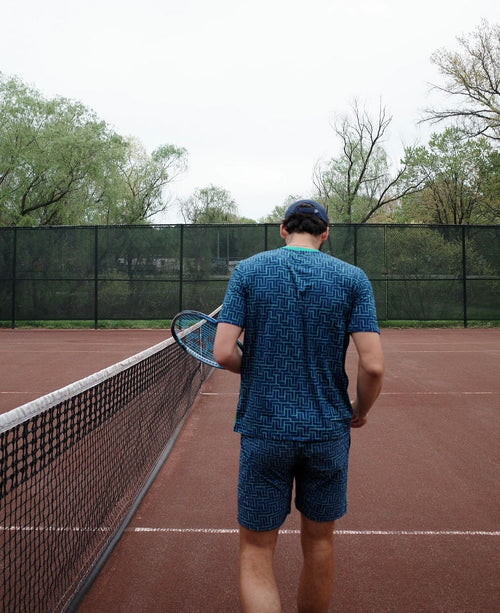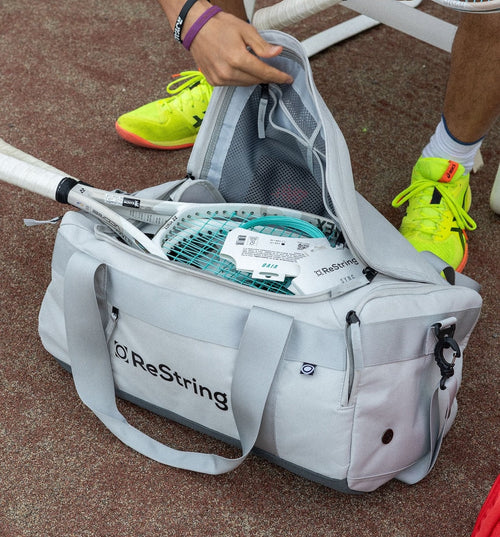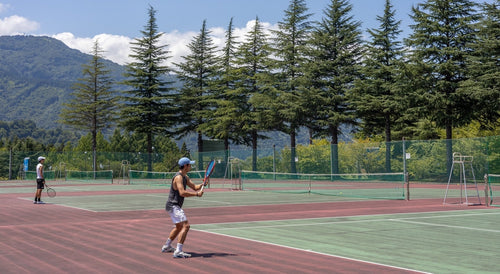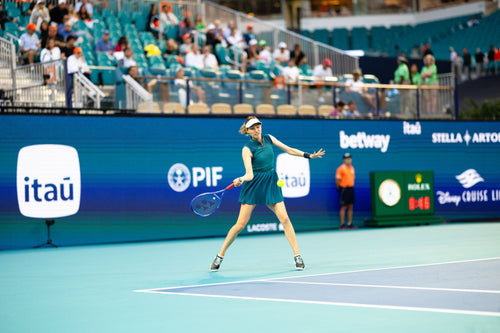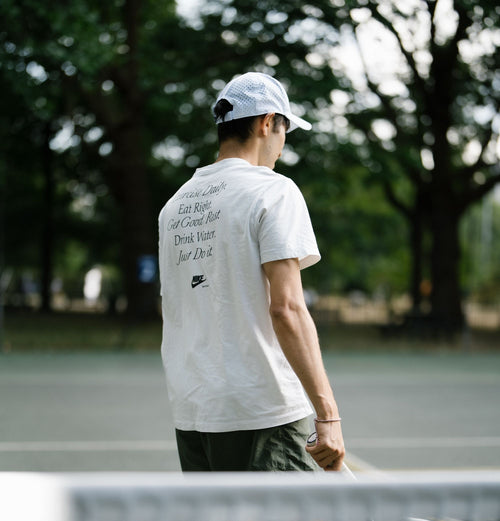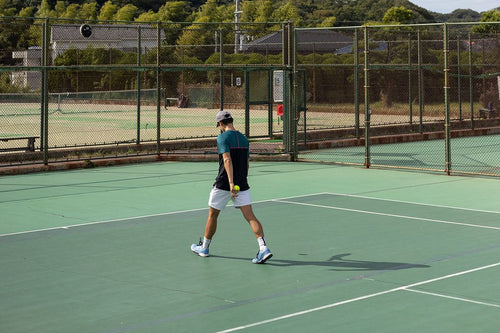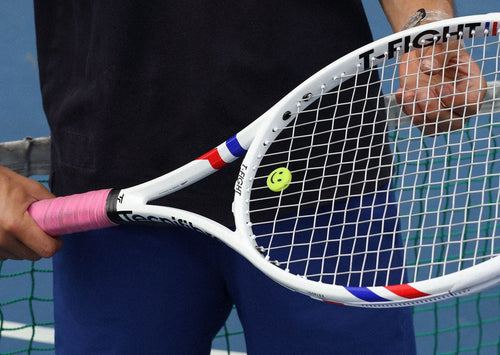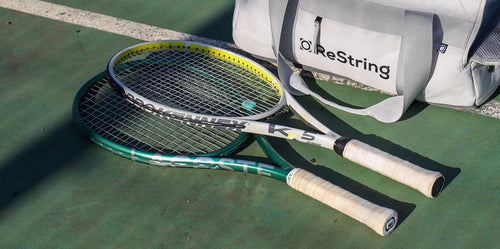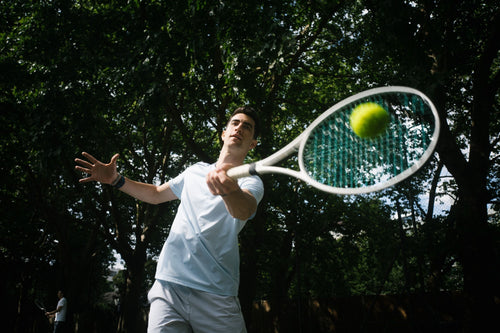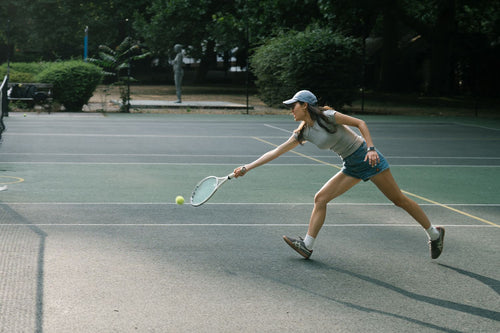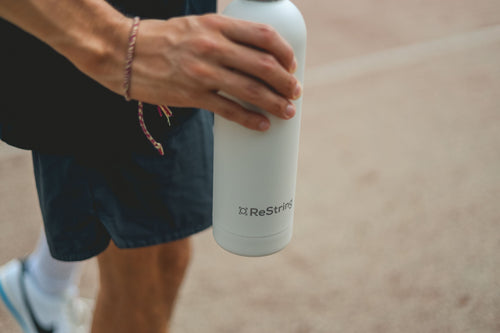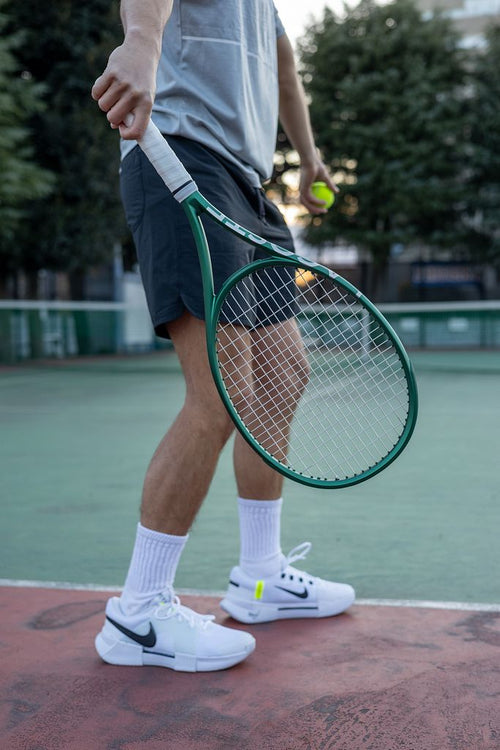Types of Tennis Balls: Complete Guide
Juan
Tennis balls aren't just fuzzy yellow spheres.
Different types serve different purposes.
This guide covers the main three categories of tennis balls.
These are: pressurized balls, pressureless balls, and junior balls.
You'll understand what makes each type unique and when to use them.
Pressurized Tennis Balls
Pressurized tennis balls contain compressed air inside their rubber core. This creates the bounce you feel on every shot.
These are what you'll find at virtually every tennis match, from local club games to professional tournaments.
When ReString visited Wimbledon recently, we picked up some pressurized Slazenger balls that feel amazing to hit.
Different Types
Regular duty balls have thinner felt for clay, grass and indoor courts. The thinner material wears more slowly on these gentler surfaces while still providing good ball movement.
Extra duty balls have thicker felt that handles outdoor hard courts. If you're playing on rough public courts, extra duty balls last longer and maintain their performance.
Tournament balls represent the premium tier. They're manufactured to stricter standards with consistent bounce characteristics and superior construction quality.
High altitude balls contain lower pressure for elevations above 4,000 feet. At high altitudes, regular balls would bounce too high and play too fast, so these allow you to play normally.
Benefits and Limitations
Pressurized balls have superior bounce, spin potential, and a lively feel preferred by competitive players.
You get immediate feedback on your shots, allowing for better ball control and shot placement.
The main downside to these balls is their limited lifespan, since they lose pressure over time.
This happens even when they're not being used. That's why new cans make that distinctive "pop" sound when opened.
Replace them when they feel noticeably dead or heavy. When the bounce height drops significantly.
This will happen after about 2-3 hours of play for competitive matches, and after 4-6 hours for recreational play.
Best For
Competitive matches and tournaments. Any player serious about performance.
Practice sessions that include rallies with others, as the realistic bounce and spin characteristics create proper playing conditions.
Pressureless Tennis Balls
Pressureless balls achieve their bounce through solid rubber core construction rather than internal air pressure.
Without the air inside the ball, they rely entirely on their rubber composition for bounce. This makes them feel heavier and firmer than pressurized alternatives.
Because of this, they are only used for specific situations. They are not suitable for match play.
Benefits and Limitations
The biggest advantage of pressureless balls is their consistent bounce over hundreds of hours of play.
They maintain the same bounce height and feel for months, making them extremely cost-effective for high-volume practice sessions.
However, they feel less responsive than pressurized balls. You'll also notice less feedback on your shots and a somewhat dead sensation in comparison.
This is why they should be used only when practicing with a ball machine, or getting fed balls to practice a specific shot over and over again.
Best For
These balls shine in repetitive practice scenarios like serving, where you need consistent bounce but don't require the responsive feel of match play.
Cost-conscious players appreciate their longevity, especially for solo practice sessions.
They're also excellent for beginners developing technique who don't yet benefit from playing with pressurized balls.
Junior Tennis Balls
The junior tennis ball system represents a revolutionary approach to teaching tennis.
Instead of forcing young players to adapt to adult equipment, these colored balls are designed to match different developmental stages.
Each stage reduces ball speed and bounce height, giving kids more time to set up shots and learn fundamentals correctly.
Stage 3 - Red Balls (Ages 5-8)
75% slower than standard balls. 25% larger, making them much easier for small children to track and hit.
The larger size increases the chances of successful contact, building confidence from the start.
Played on smaller courts (36 feet) that match young players' physical capabilities.
The slower speed allows kids to develop proper swing mechanics without being overwhelmed by ball speed.
Stage 2 - Orange Balls (Ages 8-10)
50% slower than standard balls. Standard size but lower compression, bridging the gap between beginner and intermediate play.
Played on mid-size courts (60 feet) that provide the right proportions for this age group.
Players can begin learning more advanced techniques while still having manageable ball speeds.
Stage 1 - Green Dot Balls (Ages 9-12)
25% slower than standard balls and standard size. Green dot balls represent the final transition step.
These are played on full-size courts (78 feet).
This stage allows kids to adapt to adult court dimensions while still building confidence with slightly reduced ball speed.
Benefits and Limitations
Allows proper technique development by giving players time to execute shots correctly.
Builds confidence with longer rallies, making tennis more enjoyable and less frustrating for young learners.
Reduces injury risk for young players, as they aren't straining to handle equipment designed for adults.
Interestingly, even professional players used these balls during rehabilitation from injuries, as they allow for controlled practice sessions.
There are no major limitations of these balls if they are being used for the right age group.
How to Choose the Right Tennis Ball
For Most Players
Use pressurized balls.
Whether you're a beginner or advanced player, pressurized balls are essential for any rallying, match play, or practice with another person.
They provide the proper bounce and feel that makes tennis enjoyable and realistic. The responsive feedback helps you understand how your technique affects ball behavior.
Be sure to replace them regularly to keep your hitting consistent.
Special Cases
If you are doing solo practice or ball machine work, it’s worth playing with pressureless balls. Their durability makes them cost-effective for high-volume practice.
Kids should use appropriate stage balls (red, orange, or green) for their age and development level. The progressive system ensures proper technique development.
Conclusion
Understanding tennis ball types helps you pick the right equipment for your game.
Pressurized balls remain the gold standard for competitive play, while pressureless options serve specific practice needs effectively.
The junior ball system opens tennis to younger players with age-appropriate equipment that builds skills progressively.
By matching your ball choice to your needs, you get better practice sessions and more enjoyable matches.
Consider your playing frequency, court surface, and specific needs when making your choice.
Most players find that investing in quality pressurized balls and replacing them regularly provides the best overall tennis experience.
About the Author: Juan is the co-founder of ReString. He was born in Argentina, raised in Japan, and moved to the US to pursue college tennis. He now plays as an ATP & WTA hitting partner.

